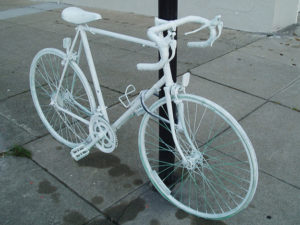Among the different actors in the pavement, bikers are the most foresighted. Due to the fact of the extreme exposition of an usual bicycle to the environment, the impacts of raining, snowing and winding should be anticipated.
There are places like the Northern European and other countries in which riders are so used to somehow bad weather conditions that they ride without apparently any inconvenient. Interestingly enough, some bikers in sunnier countries wonder how they can do it. The answer is simple: they prepare themselves. If weather forecast predicts rain, they ride with a raincoat (or even an umbrella). Coat, globes and wool hat constitute the basic equipment in winter. It does not even bother themselves when snowing and here it is better to use drought wheels. Its amazing!
A different section is required for wind. Although there is a specific garment to deal with this element know as windbreak jacket, the impact on the biker can be both beneficial or harmful just depending on the wind direction. In the first case, wind blows to your back and hence it helps you riding. On the other hand, if it hits squarely your face, you must make extra effort to move from point A to point B. Under special circumstances like in a hurricane should you not ride your bicycle for safety reasons.
